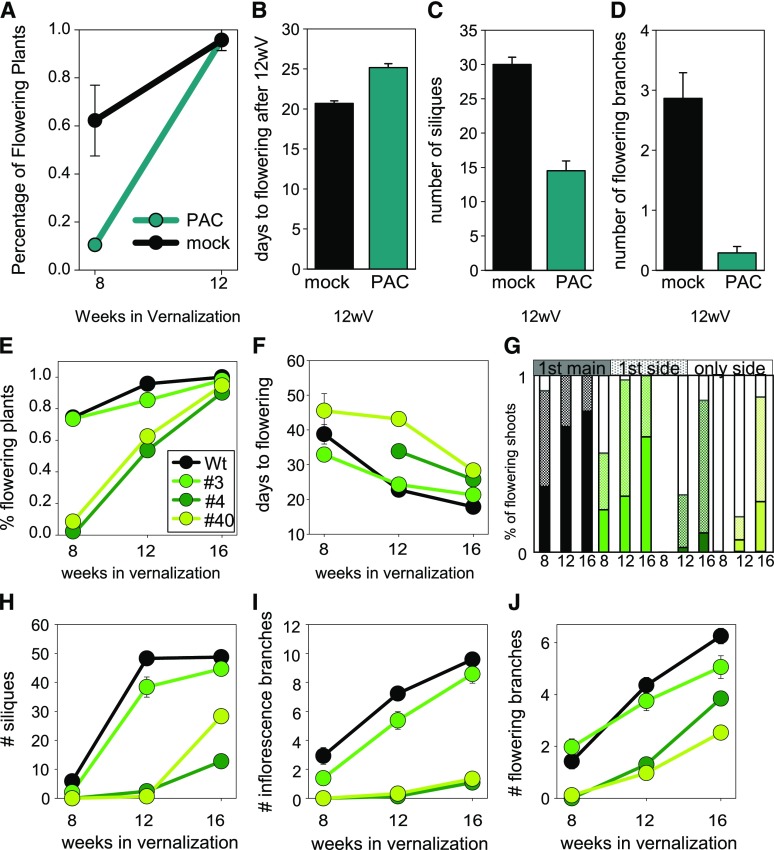Figure 4.
The role of GA in the induction of flowering during vernalization. A to D, Effects of PAC treatment on flowering. Wild-type plants were grown for 5 weeks in LD and then vernalized for 8 or 12 weeks. During vernalization, plants were treated once per week with PAC or mock (see “Materials and Methods”), and flowering-related traits were scored. A, Percentage of flowering plants after 8 or 12 weeks of vernalization (n ≥ 45 grown in two independent biological replicates). B, Time after a 12-week vernalization treatment until the first flower opened (n ≥ 79 grown in four independent biological replicates). C, Number of individual siliques formed on the main inflorescence after a 12-week vernalization (does not include siliques on inflorescence branches; n ≥ 55 grown in three independent biological replicates). D, Number of flowering side branches after a 12-week vernalization (n ≥ 38 grown in two independent biological replicates). All error bars represent se. E to J, Effects of the KNAT1::GA2OX7 transgene on flowering. Data are shown for three independent transformants compared with wild-type (Wt) Pajares. Plants were grown for 8 weeks in LD and then vernalized for 8, 12, or 16 weeks. Different flowering-related traits were measured. E, Percentage of flowering plants after different vernalization times. F, Time after vernalization until the first flower opened. G, Shoots that contained open flowers. Data are shown for each genotype after 8, 12, or 16 weeks of vernalization. Genotypes are shown using the same color code as for E. Solid portion of each column, Plants that flowered first on the main shoot; stippled portion of each column, plants that flowered first on a side branch and later on the main shoot; unfilled portion of each column, plants that only flowered on side branches and not on the main shoot. H, Number of individual siliques on the main inflorescence (does not include siliques on inflorescence branches). I, Number of flowering branches on the main inflorescence. J, Number of flowering side branches. Experiments were performed in at least two biological replicates (total n = 33). All error bars represent se.

